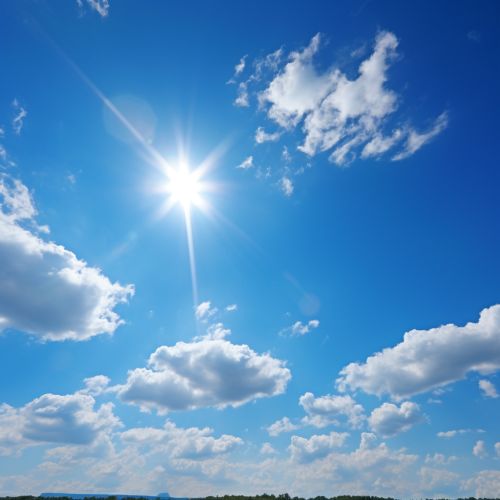The Chemistry of Tropospheric Ozone Formation
Introduction
Tropospheric ozone, also known as ground-level ozone, is a major component of photochemical smog. It is formed by a complex set of chemical reactions involving nitrogen oxides (NOx) and volatile organic compounds (VOCs) in the presence of sunlight. The chemistry of tropospheric ozone formation is a critical aspect of air quality management and climate change studies.
Chemical Reactions Involved in Tropospheric Ozone Formation
The formation of tropospheric ozone involves a series of chemical reactions. The primary precursors are nitrogen oxides and volatile organic compounds. These compounds react in the presence of sunlight to produce ozone.


Nitrogen Oxides
Nitrogen oxides (NOx) are a group of gases that contain nitrogen and oxygen in varying amounts. Most nitrogen oxides are gases without color or smell. They are released into the atmosphere from the burning of fossil fuels, such as coal, oil, and gas.
Volatile Organic Compounds
Volatile organic compounds (VOCs) are organic chemicals that have a high vapor pressure at ordinary room temperature. They are released from burning fuel, such as gasoline, wood, coal, or natural gas. They are also emitted from solvents, paints, glues, and other products that are used and stored at home and at work.
Photolysis of Nitrogen Dioxide
The process begins with the photolysis, or light-induced breaking, of nitrogen dioxide (NO2) into nitric oxide (NO) and a free oxygen atom. This reaction is represented as:
NO2 + sunlight → NO + O
The free oxygen atom can then react with an oxygen molecule (O2) to form ozone (O3).
O + O2 → O3
Role of Volatile Organic Compounds
Volatile organic compounds (VOCs) play a crucial role in the formation of tropospheric ozone. They react with nitric oxide (NO) to produce nitrogen dioxide (NO2), which can then be photolyzed to continue the cycle of ozone production.
NO + VOC → NO2
This cycle can continue as long as there are sufficient NOx and VOCs present and the conditions are conducive for these reactions to occur.
Factors Influencing Tropospheric Ozone Formation
Several factors influence the formation of tropospheric ozone, including the concentrations of precursor gases, sunlight intensity, temperature, and wind speed and direction.
Concentration of Precursor Gases
The concentrations of nitrogen oxides and volatile organic compounds in the atmosphere significantly influence the rate of ozone formation. Higher concentrations of these gases lead to higher rates of ozone production.
Sunlight Intensity
Sunlight provides the energy necessary for the photolysis of nitrogen dioxide. Therefore, the intensity of sunlight directly affects the rate of ozone formation. Ozone levels are typically highest during the summer months when sunlight intensity is greatest.
Temperature
Temperature also plays a crucial role in ozone formation. Higher temperatures increase the rate of chemical reactions, leading to faster ozone formation. This is why ozone levels are typically higher on hot summer days.
Wind Speed and Direction
Wind can transport ozone and its precursor gases over long distances. Therefore, wind speed and direction can significantly influence where and when ozone forms.
Impacts of Tropospheric Ozone
Tropospheric ozone has several impacts on human health, the environment, and the climate.
Human Health Impacts
Exposure to high levels of tropospheric ozone can cause a variety of health problems, including coughing, throat irritation, and worsening of asthma symptoms. Long-term exposure can lead to more serious health problems like chronic obstructive pulmonary disease (COPD).
Environmental Impacts
Tropospheric ozone can also have harmful effects on the environment. It can cause damage to vegetation, including crops and forests, leading to reduced agricultural productivity and forest growth.
Climate Impacts
Tropospheric ozone is a potent greenhouse gas, meaning it can trap heat in the Earth's atmosphere, contributing to global warming and climate change.
Conclusion
Understanding the chemistry of tropospheric ozone formation is essential for developing strategies to reduce ozone levels and mitigate its impacts. It involves a complex set of reactions involving nitrogen oxides and volatile organic compounds in the presence of sunlight. Several factors, including the concentrations of these gases, sunlight intensity, temperature, and wind speed and direction, influence the rate of ozone formation.
